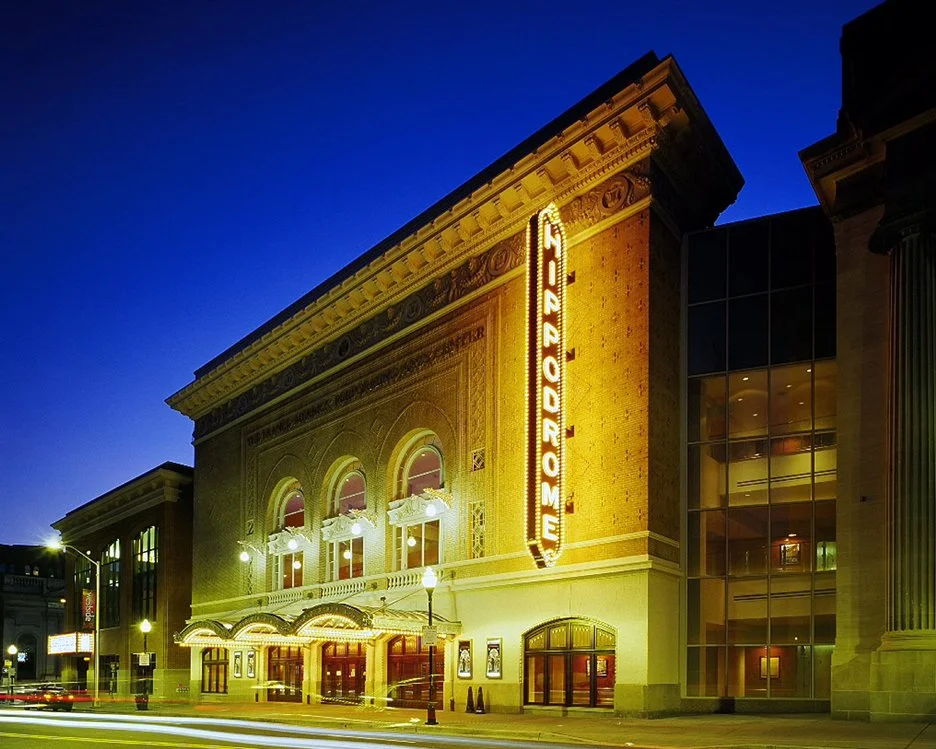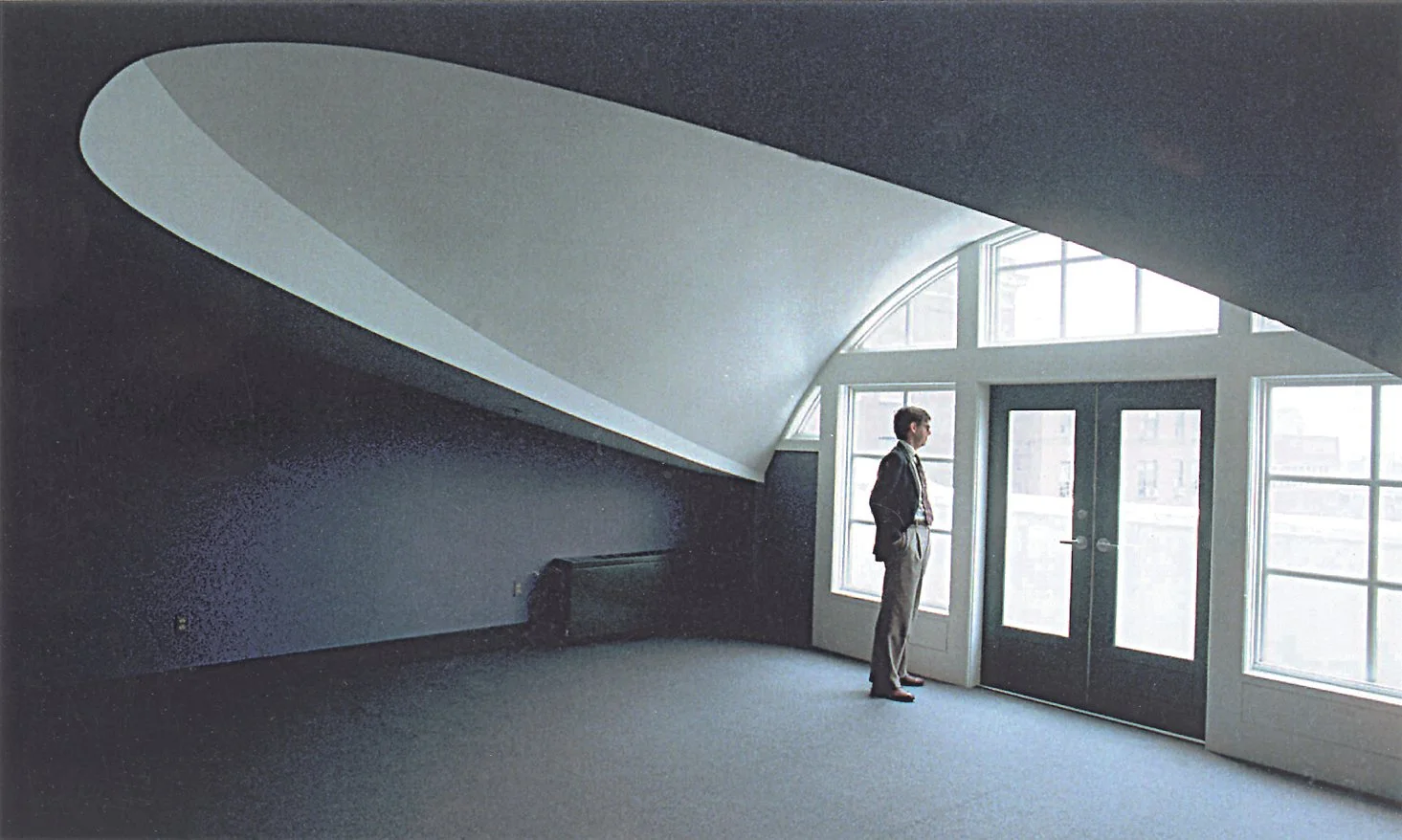When York philanthropist Louis Appell donated the former Lafayette Club’s 59 E. Market Street property to York College of Pennsylvania, the college was excited about the prospect of finally having a foothold in the heart of downtown York.
The fact that the building already had such strong, storied roots in the city only made the gift more meaningful.
Founded in 1898, the Lafayette Club was a social organization and gathering place for prominent members of the York community who would meet and have conversations about local and national issues. In 1912, it moved into its East Market Street location, a brick row house built in 1839.
The club was exclusive. Women and people of color were restricted from joining for years. It eventually shuttered in 2012.
York College’s vision is to revive the 20,000-square-foot space’s identity as a community hub, but this time to open its doors to everyone.
The building will hold classes for York College students who can then explore the surrounding neighborhoods. It also will serve as a meeting space for York residents and businesspeople.
Merging History with City’s Future
To help carry out this vision, the college called on Murphy & Dittenhafer Architects.
“We know how good they are at thinking about both form and function and maintaining historic character,” said Dominic Dellicarpini, Dean of York College’s Center for Community Engagement. “We wanted it to be an intersection between past and present.”
And there’s no better time for York College to establish a presence downtown in a location where the city’s rich history is merging with the cultural and commercial revival of the Royal Square neighborhood and surrounding areas.
Murphy & Dittenhafer Principal, Frank Dittenhafer II FAIA, LEED AP fostered a creative vision for the adaptive re-use of the “quirky” 4 ½ story building that had been added onto several times during the past 177 years.
He created a “master plan” type vision that maintained the historic character of the Classic Revival Market Street entrance, magnificent stairhall and formal “parlor type” front rooms, in conjunction with select modernizations to other areas of the building such as the Lower (Basement) Level and First Floor northern most rooms, blending the old and the new to meet a variety of program needs for York College.
“This project is a great example of working with — not against — the historic building fabric and preserving the integrity of all rooms and architectural components of significance,” Dittenhafer said. “The project also provides a great opportunity to insert a clearly new layer of expression in some of the repurposed modernized areas to set the stage for the building’s new identity as York College’s downtown (York) center for engagement with the community.”
Historical Charm with Modern Purpose
The wood and leaded-glass entrance on Duke Street was retained and refurbished, lowered to sidewalk level to provide accessibility, and features a new interior stairway with Pennsylvania bluestone risers, porcelain stone-like tile, a wood wall paneling and zinc-cladding at the new five stop elevator doors.
Old wood coat rack standards which lined the main first floor hallway were salvaged and repurposed into a display case that will show artifacts from the college, city and the former social club. The Lafayette Club seal, cut from original carpeting, will be hung as a tapestry.
Care has been taken throughout the building to preserve history and materials. For example:
- Wood floors from a bowling alley in the basement have been salvaged and will eventually be used to build upper floor workstations.
- Two historic telephone booths were left in place under the main first floor hallway stairs.
- Tavern Room murals painted in the 1960s that depicted Colonial York were restored, the old wooden bar refurbished and new lighting installed.
Phase 1 of ‘Delicate Project’ Nearing Completion
Of course, there are always some challenges that arise when retrofitting a historic property that has had several additions over the years with new infrastructure, which included a near total replacement of the heating, air-conditioning and plumbing systems and the installation of an entirely new fire protection (sprinkler) system throughout all areas of the structure.
For instance, adding an elevator shaft with access to each of the five floor levels that didn’t visibly clash or compromise the building’s historic interior or exterior.
And when contractors started demolition for the new elevator, they were surprised to find a modern structural steel column, which hadn’t shown up in any of the building plans, documents or surveys. That column which now stands “unaltered” in the Duke Street lobby alongside a historic salvaged stone column.
Similarly, much care was taken to protect the historic Tavern Room murals from utility work being done on the walls and from the new overhead sprinklers that were installed.
“It was a delicate project,” said Ryan Shank, an architect with Murphy & Dittenhafer who worked on the renovations.
A series of improvements
York College Hospitality Management students are already using the fully renovated commercial kitchen in the building’s Lower Level as a teaching lab to learn the ins and outs of managing a professional food service operation.
The first floor will serve as a community hub – a place where York College students and York residents will be able to take classes, sit in on guest lectures by York College professors and hold public meetings and events. Work on that is expected to be completed by January 2017.
In later phases, the second floor will be renovated to become the home to the College’s Office of Community Engagement and eventual co-working space, and the third floor will be remodeled into residential space that can be used by visiting professors, fellows, executives or artists in residence.
So far, reception to the new residents on East Market Street has been positive.
“The community has welcomed us with open arms,” DelliCarpini said. “They’ve been ready for us to be here.”









































To round out our 40th-year celebrations, enjoy 10 more impactful and diverse Architecture projects designed by M&D. These projects, most of which have received design awards, confirm the variety in design (from scale to usage) that we continue to be involved in today.